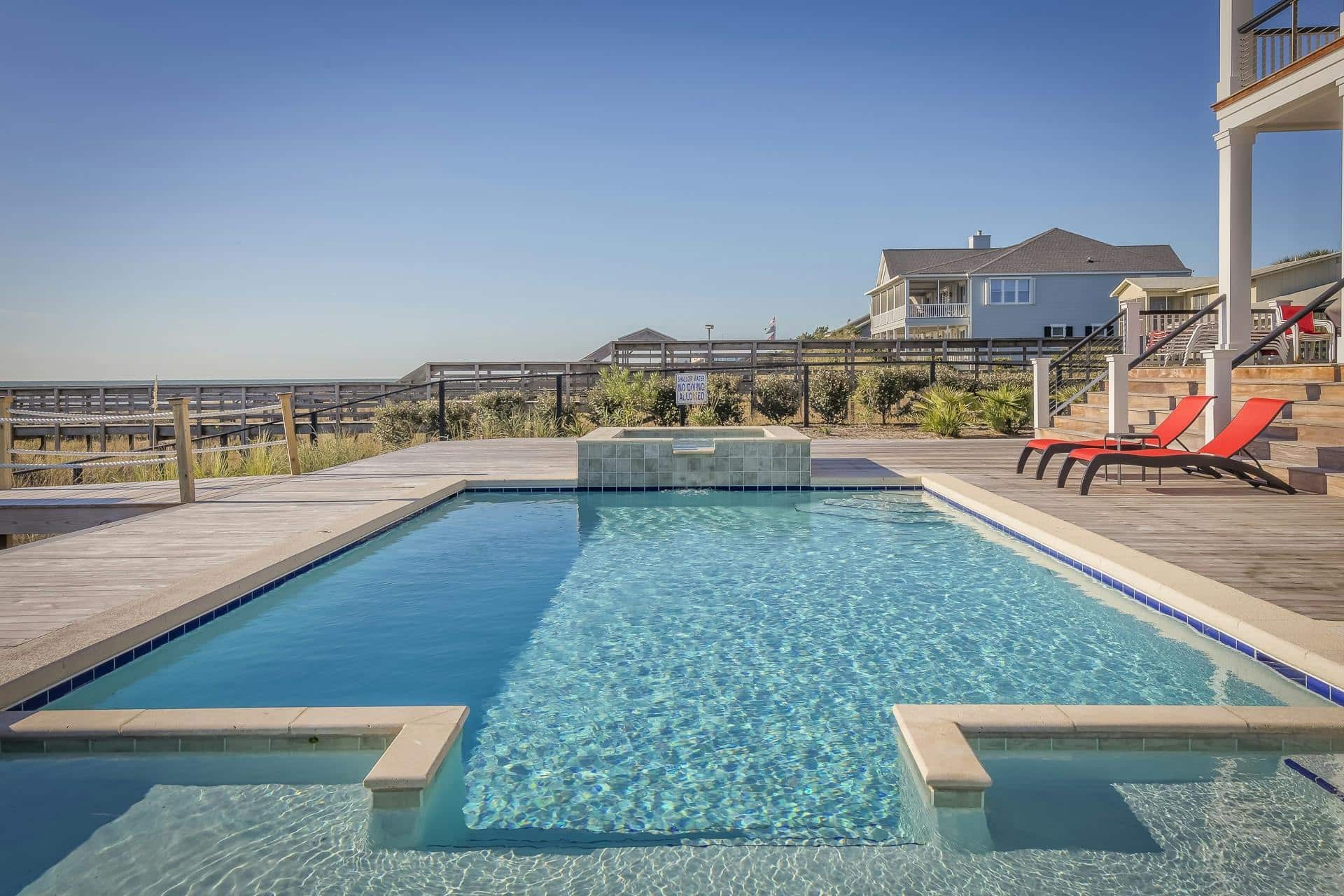What are the steps to safely add a multi-purpose pool house to your UK property?

Adding a multi-purpose pool house to your property in the UK can significantly increase its value, while simultaneously providing a dedicated space for relaxation, entertainment, and exercise. However, the process of creating this outdoor oasis requires careful planning and consideration. From evaluating the space in your garden to determining design preferences and calculating the cost, each step plays an essential role in ensuring a successful project. This article will walk you through every stage of this exciting venture, helping you make informed decisions along the way.
Assessing the Space in Your Garden
Before you delve into the specifics of your pool house project, it's imperative to assess the available space in your garden. This will not only dictate the size and shape of your construction but also its positioning relative to your house and other outdoor features.
Dans le meme genre : How do you create a low-maintenance landscape around your UK pool that enhances visual appeal?
You need to consider the landscape of your garden. Are there any slopes or uneven terrain that could pose a challenge while building? What about trees or other structures that might need to be removed or worked around? Thinking about these aspects early in the planning stage will help you avoid potential obstacles down the line.
Take note of where the sun hits your garden at different times of the day, as this could impact the design and location of your pool house. Ideally, your pool should be situated in a spot that receives ample sunlight, while the pool house might be better placed in a shaded area to provide a cool retreat from the sun.
A découvrir également : How can you implement a solar-powered pool monitoring system in a UK home?
Designing Your Pool House
Once you've analysed your outdoor space, it's time to focus on the design aspect of your pool house. This includes deciding on the style, size, and features that best align with your lifestyle and preferences.
Your pool house could be a simple structure designed primarily for changing and storing pool accessories, or it could be a more elaborate construction that doubles as a guest house, gym, or entertainment area.
When it comes to style, consider what will complement your existing property and garden. Would a minimalist, contemporary design fit in seamlessly, or would a rustic, traditional pool house be more suited to your home’s aesthetic?
Remember, the design you choose will significantly influence the cost of your project. So, it's worth spending time on this step to ensure that your pool house meets your needs without breaking your budget.
Calculating the Costs
Building a pool house is undoubtedly a significant investment. That's why it's vital to have a clear understanding of the costs involved before embarking on your project.
The total cost of constructing a pool house will be influenced by several factors. These include the complexity of the design, the materials used, the size of the building, and any additional features like heating or plumbing.
In addition to construction costs, it’s important to factor in maintenance fees, such as regular cleaning and repairs.
It's recommended to get quotes from several contractors to ensure you're getting the best price, but remember that choosing the cheapest option may not always be the best decision. Quality, reliability, and a good reputation are crucial considerations when selecting a contractor.
Planning for Construction
Now that you've assessed your garden, finalised your design, and understood the costs, it's time to prepare for construction.
First and foremost, you must check with your local council regarding any planning permissions or building regulations that may apply to your project. In the UK, some minor building works, known as "permitted developments," do not require planning permission. However, this depends on several factors, including the size and location of the pool house.
It’s also worthwhile to discuss your plans with your neighbours, especially if your pool house could potentially affect their view or privacy.
Once you've dealt with these administrative tasks, you can begin preparing your garden for construction. Depending on the size and complexity of the project, this could involve clearing the space, levelling the ground, or removing any unwanted trees or structures.
Building Your Pool House
With all the planning and preparations completed, you are now ready to embark on the exciting journey of building your pool house.
Hire a reputable contractor with a track record of delivering high-quality pool houses. Ensure that they understand your vision and can bring it to fruition within your budget and timeline. Regular communication with your contractor throughout the building process will help ensure that your project stays on track and any issues are addressed promptly.
When your pool house is complete, consider hiring a professional pool maintenance service to keep your new addition in top shape.
Ultimately, adding a pool house to your property should be a fun and rewarding experience. With careful planning, thoughtful design, and a clear understanding of the costs and logistics involved, you'll soon be able to enjoy your very own outdoor oasis.
Optimising Energy Efficiency and Sustainability
As a responsible homeowner, you should be mindful of the environmental impact of your new pool house. This means considering how to optimise energy efficiency and sustainability in your design and construction process.
Firstly, focus on the insulation of your pool house. Good insulation will keep your pool house warm in the winter and cool in the summer, reducing the need for additional heating or cooling systems. Consider using sustainable insulation materials such as sheep wool or recycled plastic.
Next, think about the energy consumption of your pool. Heating a swimming pool can be expensive and energy-intensive. To mitigate this, consider installing a pool cover to minimise heat loss. Additionally, you could use solar panels or a heat pump system to provide energy-efficient heating for your pool.
When it comes to lighting, opt for LED lights which are far more energy efficient than traditional bulbs. Also, consider installing motion sensors to ensure lights are only on when needed.
Water conservation is another important aspect to consider. Consider installing a rainwater harvesting system to collect rainwater for use in your pool. Not only will this save on water bills, but it's also a sustainable solution that helps conserve this precious resource.
Lastly, when selecting building materials for your pool house, consider their environmental impact. Choose materials that are sustainably sourced and have a low environmental footprint.
Conclusion
Adding a multi-purpose pool house to your UK property can be an exciting endeavour. From assessing the space in your garden, through designing your pool house, to understanding the costs involved and planning for construction, the process can be complex but undoubtedly rewarding. As you move forward with your project, remember to consider factors such as planning permission, building regulations, and the impact on your neighbours.
A pool house can not only enhance your property's value but also provide a space for relaxation, exercise, and entertainment. By considering energy efficiency and sustainability, you can also create an eco-friendly outdoor oasis that minimises your environmental footprint.
Remember, while the journey of building a pool house may be challenging, with careful planning and consideration, you will be able to enjoy the fruits of your labour - a stunning pool house that adds charm and functionality to your property, and an outdoor swimming area that provides endless hours of joy.
So, whether you dream of a simple garden building for storing pool accessories or a lavish pool house that doubles as a guest house, gym, or entertainment space, with the right planning and execution, your dream can become a reality. Enjoy the journey, and look forward to the moment when you can finally relax by your pool and take pride in your achievement.
Image credit: Homebuilding & Renovating.
